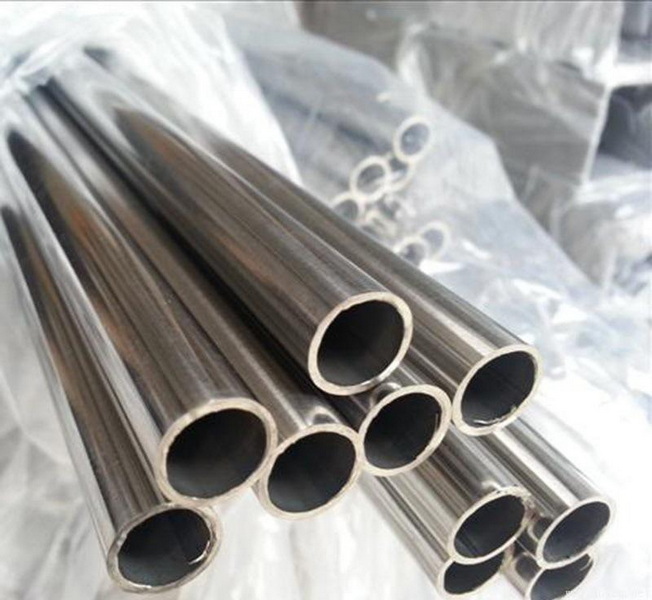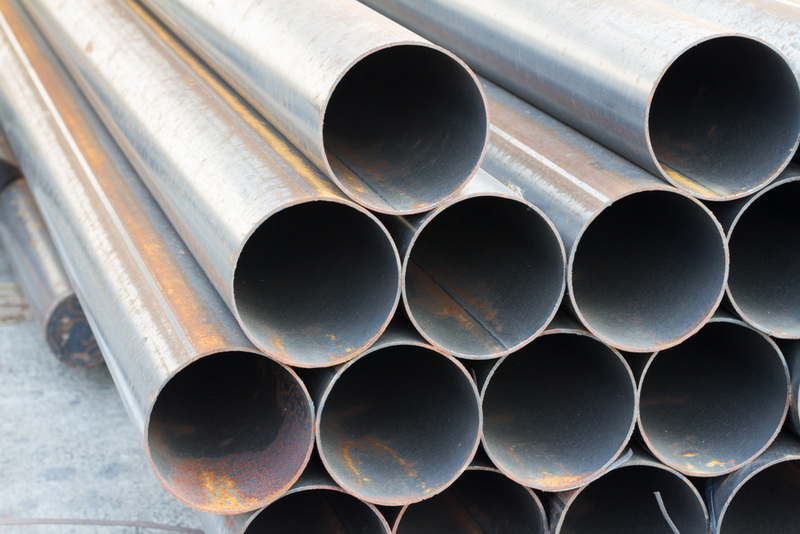English


Views: 222 Author: Tomorrow Publish Time: 2025-07-09 Origin: Site











Content Menu
● Key Differences Between Austenitic and Ferritic Stainless Steel
● Additional Considerations in Material Selection
>> Corrosion Resistance in Specific Environments
>> Thermal Stability and High-Temperature Performance
>> Impact of Alloying Elements
● Summary of Practical Applications
● FAQ
>> 1. What is the main structural difference between austenitic and ferritic stainless steel?
>> 2. Why is austenitic stainless steel generally non-magnetic?
>> 3. In which applications is ferritic stainless steel preferred over austenitic?
>> 4. Can both austenitic and ferritic stainless steels be hardened by heat treatment?
>> 5. What factors should be considered when selecting between austenitic and ferritic stainless steel?
Stainless steel is one of the most essential materials in modern industry, engineering, and daily life. Its unique combination of strength, corrosion resistance, and versatility makes it indispensable across countless applications. Among the various types of stainless steel, austenitic and ferritic grades stand out as the most widely used families. Understanding the differences between austenitic and ferritic stainless steels is crucial for engineers, manufacturers, and anyone involved in material selection. This article provides a comprehensive exploration of their composition, properties, applications, advantages, and limitations.

Stainless steel is an iron-based alloy containing a minimum of 10.5% chromium, which imparts corrosion resistance. Additional alloying elements such as nickel, molybdenum, and manganese are often added to enhance specific properties. The microstructure of stainless steel, determined by its chemical composition and processing, divides it into several categories, with austenitic and ferritic being the most prominent.
Austenitic stainless steels are characterized by a face-centered cubic (FCC) crystal structure, achieved primarily through the addition of nickel to the alloy. The most common grades belong to the 200 and 300 series, with the 300 series (such as 304 and 316) being the most widely used. The typical composition includes:
- Chromium: 16–26%
- Nickel: 6–22%
- Carbon: Low (usually below 0.08%)
- Manganese, nitrogen, and other elements may be present in smaller amounts
This structure is stable at all temperatures, resulting in a non-magnetic material in the annealed state.
- Excellent corrosion resistance: Performs well in a wide range of environments, including acidic and chloride-rich conditions.
- Non-magnetic: Generally non-magnetic in the annealed condition, though some magnetic response can develop after cold working.
- High ductility and formability: Easily formed into complex shapes and suitable for deep drawing and bending.
- Good weldability: Can be welded using all standard techniques without risk of brittleness.
- High toughness: Maintains strength and toughness at both cryogenic and elevated temperatures.
- Hardened by cold work: Cannot be hardened by heat treatment, but strength increases with cold working.
Austenitic stainless steels are chosen for demanding environments where corrosion resistance and formability are critical. Common applications include:
- Medical devices and surgical instruments
- Food and beverage processing equipment
- Chemical and petrochemical processing
- Architectural structures and building facades
- Automotive components (exhaust systems, trim)
- Household appliances and kitchenware
- Storage tanks and pressure vessels
- Heat exchangers and boilers
Ferritic stainless steels possess a body-centered cubic (BCC) crystal structure, similar to pure iron at room temperature. These steels typically contain:
- Chromium: 10.5–30%
- Carbon: Very low (usually below 0.08%)
- Little or no nickel
- Small amounts of molybdenum, titanium, or niobium in some grades
The absence of significant nickel content makes ferritic stainless steels more affordable and magnetic.
- Good corrosion resistance: Suitable for many environments, especially those with moderate corrosive exposure.
- Magnetic: Strongly magnetic due to the BCC structure.
- Good formability: Can be formed and shaped, though not as easily as austenitic grades.
- Moderate weldability: Weldability is generally good for thinner sections but can be limited in thicker materials.
- Resistant to stress corrosion cracking: Performs better than austenitic grades in chloride environments.
- Cannot be hardened by heat treatment: Like austenitic steels, ferritic grades can only be strengthened by cold working.
- Lower ductility and toughness: Especially at low temperatures, ferritic steels are less tough than austenitic grades.
Ferritic stainless steels are widely used where moderate corrosion resistance, magnetic properties, and cost-effectiveness are important. Typical uses include:
- Automotive exhaust systems and trim
- Household appliances (washing machines, dishwashers, oven liners)
- Architectural and decorative applications
- Food processing equipment
- Industrial equipment and heat exchangers
- Building and infrastructure components

| Feature | Austenitic Stainless Steel | Ferritic Stainless Steel |
|---|---|---|
| Crystal Structure | Face-centered cubic (FCC) | Body-centered cubic (BCC) |
| Main Alloying Elements | Chromium, Nickel | Chromium |
| Nickel Content | High | Low or none |
| Magnetic | No (in annealed state) | Yes |
| Corrosion Resistance | Excellent | Good (less than austenitic) |
| Hardenability | By cold work only | By cold work only |
| Weldability | Excellent | Good (thickness dependent) |
| Ductility and Formability | High | Moderate |
| Toughness at Low Temperatures | Excellent | Lower |
| Resistance to Stress Corrosion Cracking | Lower | Higher |
| Cost | Higher | Lower |
Advantages:
- Outstanding corrosion resistance in most environments
- Superior formability and weldability
- Excellent mechanical properties at a wide temperature range
- Non-magnetic, suitable for sensitive applications
Limitations:
- Higher cost due to nickel content
- Susceptible to stress corrosion cracking in chloride environments
- Cannot be hardened by heat treatment
Advantages:
- Lower cost, as little or no nickel is used
- Good resistance to stress corrosion cracking
- Magnetic, suitable for specific applications
- Good oxidation resistance at high temperatures
Limitations:
- Lower toughness, especially at low temperatures
- Less formable and weldable in thicker sections
- Moderate corrosion resistance compared to austenitic grades
While austenitic stainless steels generally offer superior corrosion resistance, ferritic grades excel in certain conditions. For example, ferritic stainless steels show better resistance to stress corrosion cracking, particularly in chloride-containing environments such as seawater or chemical plants. This makes ferritic steel a better choice in applications where cracking due to tensile stress and corrosive agents is a concern.
Ferritic stainless steels tend to have better resistance to grain growth and carbide precipitation at high temperatures, which can degrade mechanical properties. This makes ferritic grades more stable and reliable in high-temperature applications such as automotive exhaust systems and industrial furnaces. Austenitic steels, while excellent at elevated temperatures, can suffer from sensitization if improperly heat-treated, leading to intergranular corrosion.
Nickel is the defining element for austenitic stainless steel, stabilizing the austenite phase and enhancing corrosion resistance and toughness. However, nickel is expensive and subject to market fluctuations, which can significantly affect the cost of austenitic stainless steels.
Ferritic stainless steels reduce or eliminate nickel content, relying mainly on chromium for corrosion resistance. Some ferritic grades include molybdenum or titanium to improve pitting resistance and strength, respectively.
Austenitic stainless steels, due to their high ductility and toughness, are easier to form into complex shapes and perform well in deep drawing and bending operations. Their excellent weldability allows for reliable joining in various manufacturing processes.
Ferritic stainless steels are more challenging to form and weld, especially in thicker sections. They are prone to grain growth and embrittlement if heat input during welding is not carefully controlled. Machining ferritic grades can also be more difficult due to their hardness and magnetic properties.
| Application Area | Preferred Stainless Steel Type | Reason |
|---|---|---|
| Medical and Food Industry | Austenitic | Superior corrosion resistance and hygiene |
| Automotive Exhaust Systems | Ferritic | Cost-effective, good high-temperature resistance |
| Chemical Processing Equipment | Austenitic | Excellent corrosion resistance |
| Household Appliances | Ferritic | Magnetic properties, cost efficiency |
| Architectural Structures | Austenitic or Ferritic | Austenitic for aesthetics, ferritic for cost savings |
| Pressure Vessels and Tanks | Austenitic | High strength and corrosion resistance |
Austenitic and ferritic stainless steels are both vital to modern industry, each offering unique advantages. Austenitic grades are prized for their exceptional corrosion resistance, formability, and toughness, making them ideal for demanding and hygienic applications. Ferritic grades, on the other hand, offer cost-effectiveness, magnetic properties, and good resistance to stress corrosion cracking, making them suitable for automotive, appliance, and architectural uses. The choice between these two families should be guided by the specific requirements of the application, balancing properties, performance, and cost.

Austenitic stainless steel has a face-centered cubic (FCC) crystal structure, while ferritic stainless steel has a body-centered cubic (BCC) structure. This difference in microstructure leads to variations in properties such as magnetism, ductility, and corrosion resistance.
The FCC crystal structure of austenitic stainless steel prevents the alignment of magnetic domains, making it non-magnetic in the annealed state. However, some magnetic response can develop after cold working.
Ferritic stainless steel is preferred in applications where magnetic properties, cost-effectiveness, and resistance to stress corrosion cracking are important. Common uses include automotive exhaust systems, household appliances, and architectural components.
No, neither austenitic nor ferritic stainless steels can be hardened by heat treatment. Both can only be strengthened through cold working processes.
Key factors include the level of corrosion resistance required, need for magnetic properties, cost constraints, mechanical property requirements (such as toughness and ductility), and the complexity of forming or welding needed for the application.
Stainless Steel Grades 201 Vs 304: Cost Vs Performance Breakdown
316L Vs 316 Stainless Steel Grades: Which Is Better for Corrosion Resistance?
Comparing Austenitic Vs Martensitic Stainless Steel Grades: What You Need To Know?
Stainless Steel 430 Vs 304: Key Differences Explained for Manufacturers
304 Vs 316 Stainless Steel Grades: Which One Suits Your Project Best?
Stainless Steel Pipes Vs Galvanized Pipes: Durability And Cost Analysis
Comparing Stainless Steel Pipes And PVC Pipes: What You Need To Know?
Stainless Steel Pipes Vs Copper Pipes: Pros And Cons for Industrial Use
Seamless Stainless Steel Pipes Vs Welded Pipes: Key Differences Explained
Stainless Steel Pipes Vs Carbon Steel Pipes: Which One Suits Your Project?
